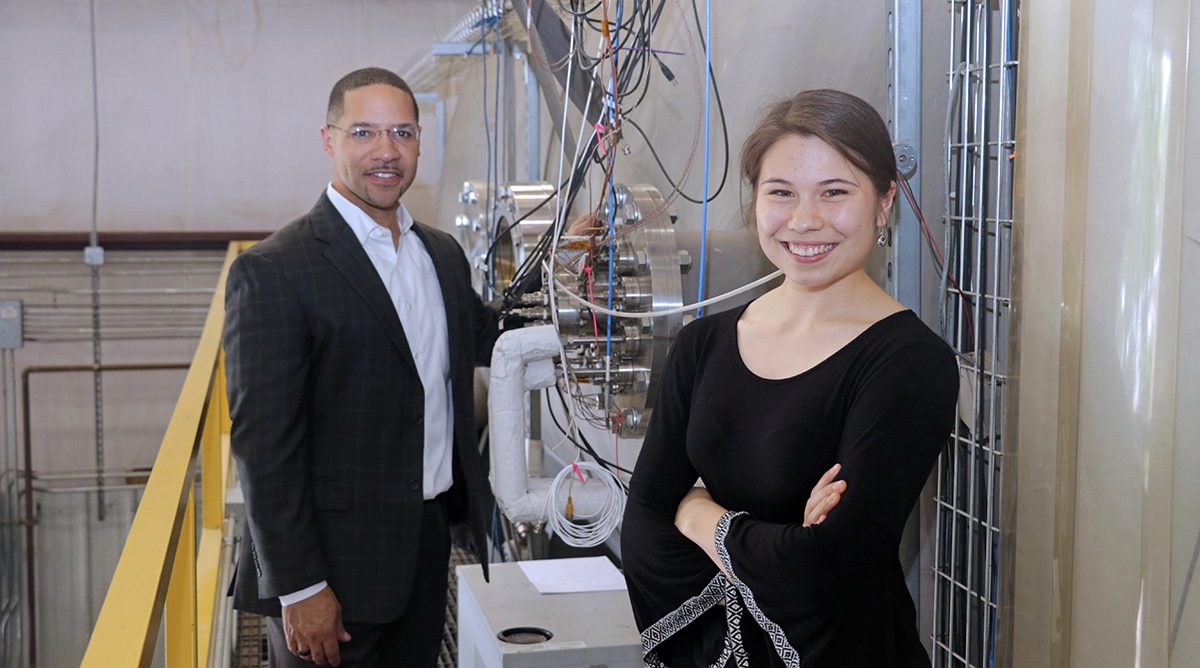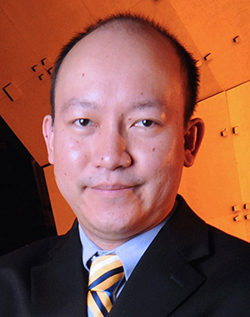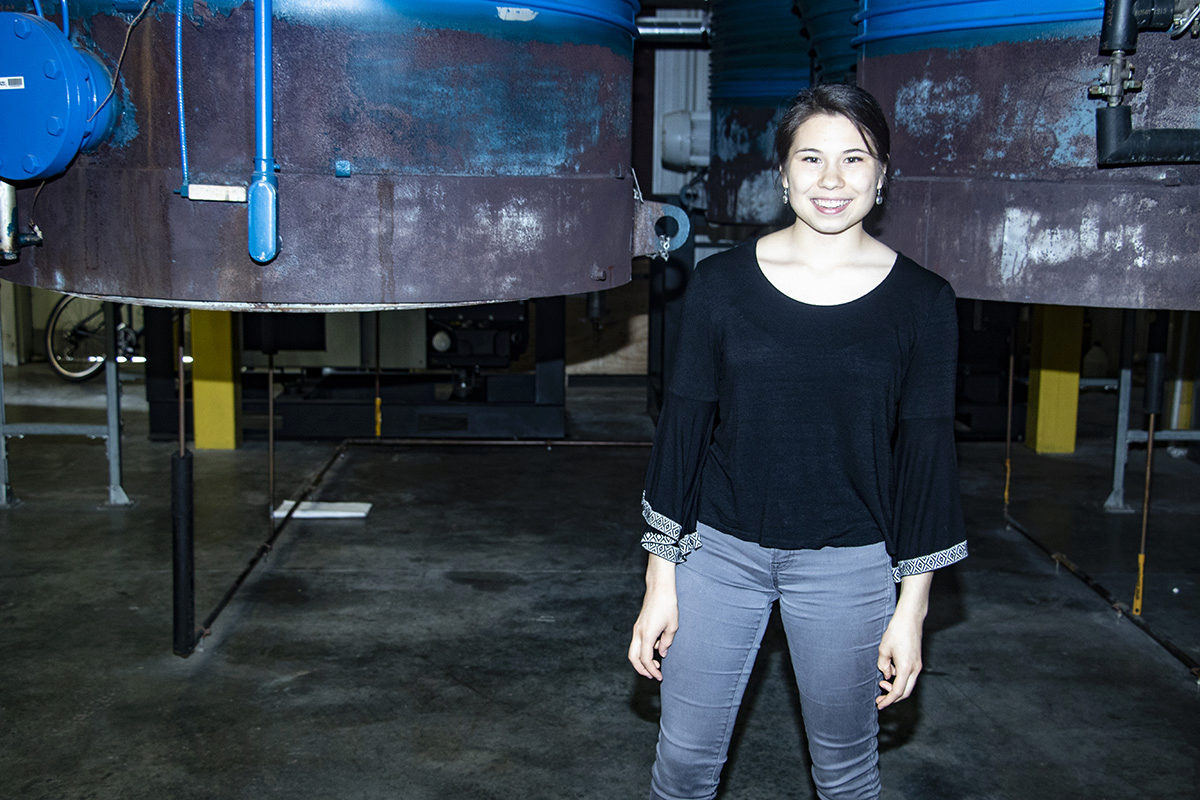
Mentoring the Next...Prof. Mitchell Walker with one of his star students, Abigail McClain.
Undergraduate Research @GT-AE....
...it keeps diligent students working late into the night, and rouses them from an anemic sleep in the morning. It promises conclusions, but delivers more questions. And, while friends studying history are confident that World War I happened, AE student researchers are always a little bit tortured by data that, well, could go either way.
None of this seems to have had a negative impact: a 2015 survey found that more than 30 percent of eligible AE undergraduates negotiate and participate in research - for money, for credit, or for the shear love of the pursuit. It's more of a calling than a curriculum requirement. And that's a good thing. The passion of our up-and-coming researchers is the foundation of AE's future. With this in mind, we like to visit with our youngest researchers from time to time to get an idea of what’s coming down the pipeline.
AE undergrad Abigail McClain is a home-schooled Atlanta native who, this summer, will be doing research on electric propulsion at NASA’s Jet Propulsion Lab (JPL). She doesn’t yet know exactly what her job will be, but she does know research will put her into the thick of it. And she’s game.
“I’m really excited to work at JPL because their motivation isn’t just engineering. It’s also physics and science, the big picture,” she says. “It’s such a noble mission.”
Before earning the much-coveted JPL research internship, McClain spent several semesters in AE’s High Power Electric Propulsion Lab (HPEPL) where she demonstrated her readiness. Under the mentorship of the lab’s director, Prof. Mitchell Walker, and research engineer Dr. Thomas Liu, she jumped into research tasks big and small.
She started out monitoring vacuum chamber tests for external partners, but more recently was tasked with upgrading the capabilities of the Vacuum Test Facility II (VTF2) using Labview software. She has also contributed to a short study that examined how oblique shocks introduced to a rocket nozzle could reduce the power generation capabilities of the rocket’s exhaust. The latter project involved a larger concept – magnitoypdrodynamics (MHD) – a process that uses the plasma in rocket exhaust to generate a usable current.
McClain says one of her major MHD projects required her to design a high temperature-resistant ceramic casing for a 3D-printed plastic component (a magnet).
 |
| Dr. Thomas Liu |
“I came in two weeks before the semester started and put in 10-hour days on that one. I couldn’t just depend on my theoretical understanding of the materials. I had to play with the materials to see what worked. There was a lot of trial and error. I was logging each attempt and taking photos of every attempt, its failures, and its fixes. The scariest part was at the end of each day when I had to see if my prototype cracked,” she says.
“It was odd, really, to think that I was working in the HPEPL to figure out problems that involved ceramics. That was not what I would have expected. But I knew that it was necessary if we were going to test concept. In the end, I produced nine working components after about five or six weeks, which I think was a good thing. ”
But it wasn’t a done deal. The next step was to install those components into an actual rocket nozzle for what’s called a ‘hotfire test.' McClain’s hard work had won her an invitation to that test -- at the University of Alabama in Huntsville. There was only one hitch: the test was on the same day as McClain’s performance with the Georgia Tech Dance Team.
And so?
“It was my third year on Dance Team and my first chance to see my research in action. I went to Huntsville.”
If she sounds uber-calm, it may be because Abigail McClain has already mulled many of the big picture problems that give others pause.
She’s not overly worried about being a female in a male-dominated field:
“I’ve always been the only girl. I grew up with four brothers. It’s never fazed me yet.”
She’s comfortable with the achievability of her ultimate goal – a job in the space industry:
“Either working for a company or doing research in a lab… my mother just won’t let me be an astronaut in space [laughs].”
And she is downright proud of her decision to major in both physics and aerospace engineering:
“I like to say that physics is concerned with everything – the foundation for all sciences. And I’m drawn to that. If you ask what motivates the physicist, it’s the search for truth. What motivates the engineer? Making the truth useful."
[pauses]
"I like that, too.”
If you know an undergraduate researcher who is doing some great work, contact the AE Communications Office.
